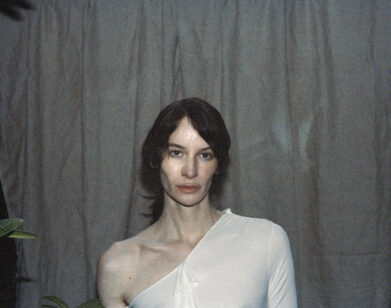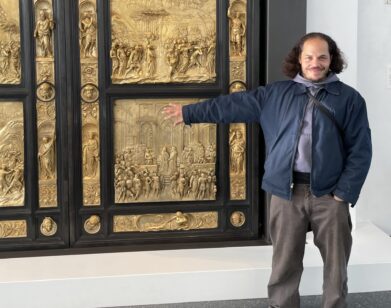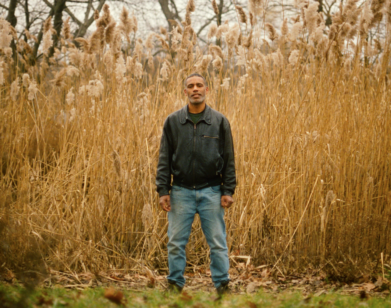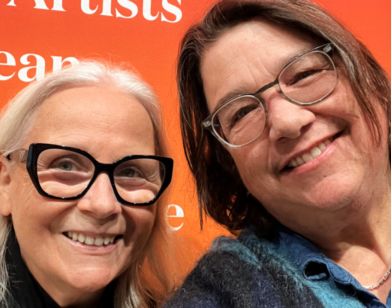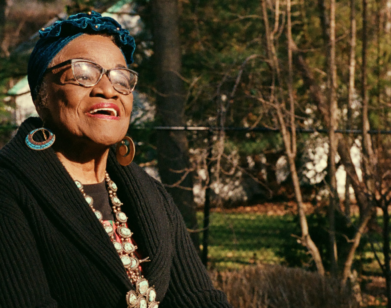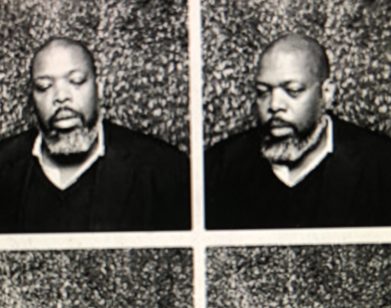IN CONVERSATION
For Maggie Nelson, Criticism Is an Expression of Love
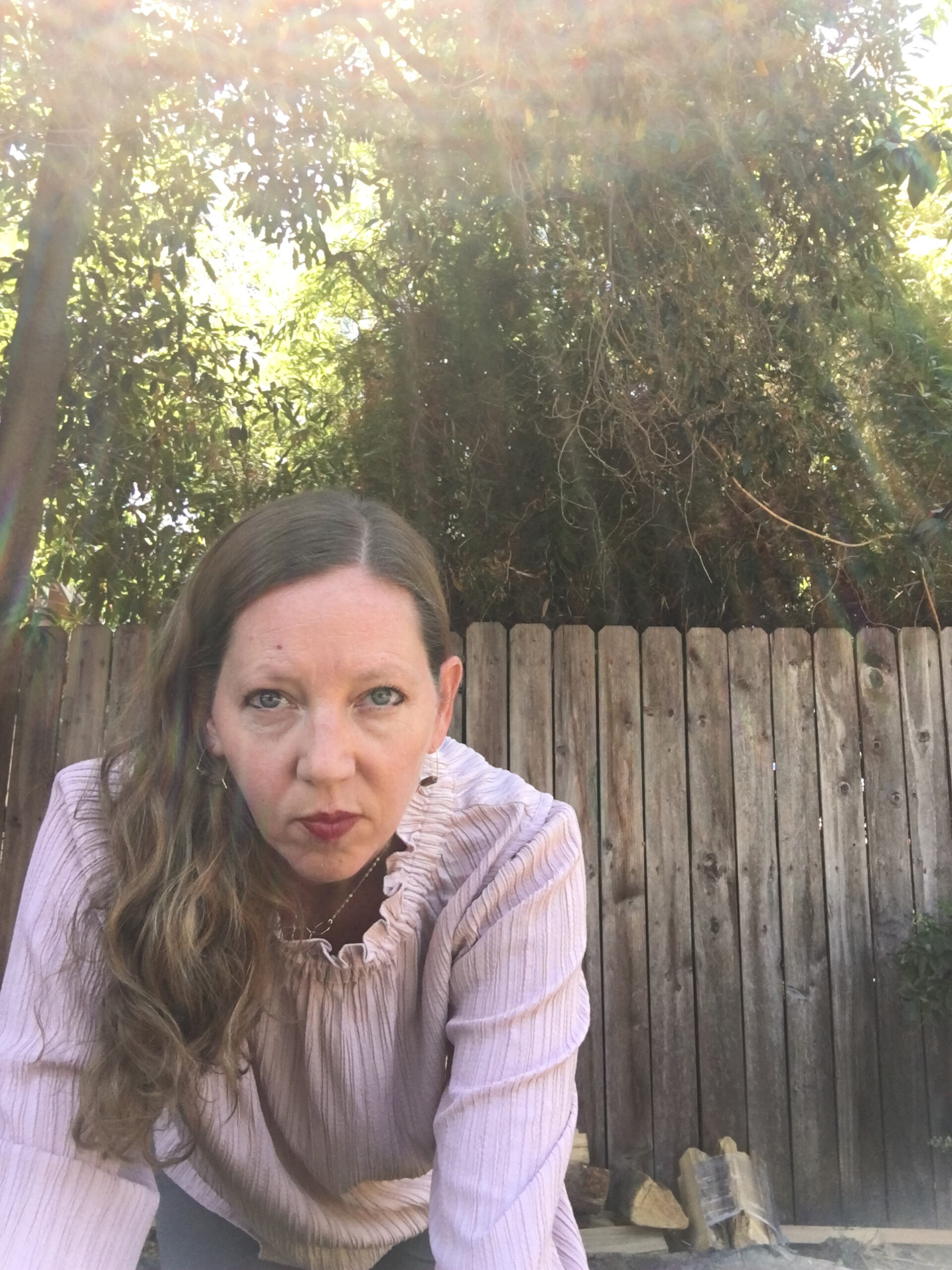
Photo courtesy of Maggie Nelson.
When he got on a Zoom call last week with the acclaimed writer and critic Maggie Nelson, the director Mike Mills was a bit nervous. “You intimidate me on a lot of levels,” he confessed. That might have something to do with Nelson’s sensitivity and erudition, which is on full display in her new book Like Love: Essays and Conversations, in which essays, reviews, profiles and interviews with artists, published over a period of two decades, are all collected for the very first time. They range from conversations with Maggie’s longtime pal Eileen Myles, to a discursive fan-to-fan email exchange with Bjork, to an intimate profile of the artist Carolee Schneemann, with whom Nelson spent time in upstate New York. “It’s a real spiritual practice to empty yourself enough to actually hear what someone’s telling you about their work,” she told Mills, the Oscar-nominated writer and director of delicate family dramas like 20th Century Women and C’mon C’mon. On the day of Nelson’s book release, she and Mills went deep on the meaning of criticism and the utility of language.
———
MAGGIE NELSON: I’ve done a lot on Zoom this week. It’s really like a PTSD feeling.
MIKE MILLS: Are you in your office?
NELSON: I am in my office.
MILLS: Okay. Let’s talk about your book. It was really fun. In the conversation with Eileen Myles, you talk about the book as the container. As a reader and a fan of yours, I have the same feeling. It’s like, “Oh, I’m getting to see this other side of your practice, your interests, your relationships.” It did really feel like you were cruising around, visiting different friends and people you’ve just met or known forever. I was curious what it was like for you to put that all together. Was it freeing or something, or has it changed things?
NELSON: Before I put it together, I didn’t really think about how it would change things. I’ve been very book-focused and I write a lot of art essays. But the art essays, I write them kind of on the sly and it felt like a free space for me, because I haven’t thought a lot of people read them. They’re just in catalogs and there tends to be a more private transmission between the artist and the gallery or whatever. The idea of the book was like, “These haven’t really been published all together, or I haven’t really conceived of them like that.”
MILLS: Yeah. It struck me that it refracted back to the different people you were interacting with. It kind of gave me a behind-the-scenes feeling. I love you saying that you feel stupid when you write, like in that Eileen conversation. That was so nice to read as an admirer of yours.
NELSON: That’s nice.
MILLS: Also, the thing about writing where, at one point, it was an empty space or a private space where you could process and find yourself or have this selfhood. And then it was really gone and you’re struggling to recreate this private space. I did get the sense that, in these essays, you’re hiding away in public but you’re very much there.
NELSON: The great thing about writing and art, as you know, is there’s never any hiding. It’s all about tricking yourself into continuing to be an expressive person, because there are anxieties that go with public expression, whether or not you think one person or 1,000 are going to be looking at it. I like that conversation with Eileen, too. We met when I was 19, so it felt very interesting for somebody that was so marked as making all of my beginnings possible, in an early moment of life, to revisit and be like, “Wow, how has this whole life thing been going?
MILLS: Right. I’ve read you talking about Eileen over the years in different contexts and here it gave me that behind-the-scenes quality. I would love to ask you for the whole 45 minutes to try and recreate the private space, because I find that really fascinating. And I was surprised, because in reading your stuff I always feel like you’re very free and not burdened by that. But, of course, everyone is.
NELSON: Right. People have talked about a lot of my books as being dialogic or interpersonal in some way. But you learn how to make things, at least I do, by looking at things that I admire. A lot of the people in this book provoke this deep hunger while I’m in the gallery of understanding their tone. You can’t go home and be like, “How can I do it writing?” Because you’re not them and it’s not the same medium. But this book is a lot of my immersion of these people into my work. I’ve admired things that I’ve been like, “Wow, how would you get that tone?” or “How would you get that orientation or stance?”
MILLS: I love what Hilton [Als] wrote, which you got the title from. I feel a really similar thing with you and Hilton where sometimes a writer’s facing you and telling you stuff, and often I feel like I’m alongside you and you’re showing me something. You’re along for the ride. He has his arm around you and he’s sort of talking to you about stuff. I love that feeling, especially in the heightened, intelligent space that you both work in.
NELSON: That’s nice. I really like writers like Hilton where, even within a sentence, you think you’re starting in one place and then you’re happily bewildered by where they’re bringing you.
MILLS: Why did you use that for the title?
NELSON: I wanted this book to be a collection of criticism, broadly defined. But when people hear criticism or they say someone’s a critic, that means evaluative. I wanted to announce that the book had to do with things that I like and love, but that because of the weirdness of Hilton’s phrase, and because of the propulsiveness of what he’s talking about, it’s not a simple version of, “Oh, I love that.” I really liked the web of associations that came with that. Part of my critical practice, starting when I was in graduate school, is that only things I thought were great and needed more light on them merited the powers of my attention. I made that decision early on and I have mostly stuck to it.
MILLS: Right. And within that complicated definition of love, there’s a lot of push and pull. Also, I didn’t really know that much about Carolee Schneemann. I’ve seen some images, but I’m not knowledgeable about her or her work. All that parsing out of your experience with her is so beautiful and interesting. I mean, you describe her tub. It’s just great. Sorry, to be so simple.
NELSON: No, that’s awesome. I was asked to write a long piece on Carolee, like a retrospective of the work, and they sent me up there, so I got to spend some time with her. A lot of my other writing about art is more like, I go to the gallery, go to the studio, get the slides, get the press materials, do my own research, but this was different. So, the tub matters and us going out for dinner matters.
MILLS: You made me just so interested in this person.
NELSON: I’m so glad. It really matters a lot for Carolee, because she had a lot of cultural capital and was always talked about as one of the most famous feminist performance artists, alongside Marina Abromovic and Yoko Ono. But it didn’t translate, as it so often the case, into money for Carolee. It’s also really important, because people sometimes think that she didn’t want all that, but of course she wanted all that. And then you get into this career where everyone’s lauding you for precisely this thing that has been really difficult, which is not being attractive to any promotional machines. So, there’s a paradox there as well. One of the really interesting things about writing about other people’s art is the tension between wanting to and having to write about what you got from the work. I make an analogy with Alice Notley talking about when people say, “Well, you’re such a feminist, why are you always writing about men?” And she says, “My dead are men, and I need to talk to them.” There’s a poignancy and a lot of energy there that I find very moving.
MILLS: Yeah. Sticking with Carolee for one more minute, you’re in this conversation with her and you use the word precarity. It seems you’re often drawn to precarity or–
NELSON: Maybe, yeah. Maybe I’m working something out. It kind of brings us to the conversation with Jacqueline Rose and how she’s all about holding these ambivalences or contradictory or things that make us feel precarious because they can’t be resolved. I was really happy to talk to her because she’s so articulate about that in her work. I really wanted to take the opportunity to ask her to define thinking, in this context, as really just being able to hold contradictory things like feelings. And then, because she’s a psycho-socio-political critic, linking that to fascism resistance and the promises that the neo-fascist makes, that there will be an end to the agony and joy via a process of scapegoating and repression. The things that cause us distress can be dealt with. So the book is not about that; the book is about art, but it helps me to be around these people and their work. It helps me to feel like all that can be held and it won’t tear us apart.
MILLS: Mm-hmm. Often, when I’m reading you, I feel a couple things. One is, “Wow, I’m really with this person thinking”—and it’s this very physical act. And it was interesting in the Eileen Myles conversation you’re like, “Ideas are like concrete objects in your mind, like furniture that you can move around in a room.” And I felt like, “Exactly, I feel like I’m in that room.” But then, sometimes there’s this great attention to your love of language from a poet’s background. The way your appreciation for Hilton was captured by words is really pronounced.
NELSON: In everything that I write, even if it’s very lyrical or autobiographical, there’s something that you need to say, and saying it in language that’s pleasing is kind of the secondary goal. With some of these essays, I want them to have precision and hopefully the pleasure of language. But it’s not the very first thing in the order of business.
MILLS: Right. Someone needs to turn the Bjork piece into a play or something, because that’s another delight of the book. It’s great to see you at all these different places and the way that Bjork is speaking to you. And I love that you spoke back in your way. It was like a direct letter to her. You used everything in your toolbox and she wrote very much from her own toolbox.
NELSON: Yeah. We have different idioms, for sure.
MILLS: But each piece is very precise and articulate and honest, and also it’s fun to read you guys fan out on each other. It’s important for all of us to see. It’s a silly, weird way of feeling community.
NELSON: Yeah. When I titled all these pieces, I picked different titles for them than how they may have originally traveled. I mean, another big danger when writing about art is you see their art, and then you see a flicker of one of your hobby horses pass by, and then you kind of distort their whole project to this thing you have in mind. I noticed common themes when I put the book together, and sometimes I had to take out paragraphs from different people’s essays where I was clearly working on the same topic in multiple ways. Not to sound too hokey, but it’s a real spiritual practice to empty yourself enough to actually hear what someone’s telling you about their work.
MILLS: Yeah. Because, one of your themes is attention and care and trying to understand others and understand differences. It seems like you’re drawn to people with a talent for blurring, messing with categorizations. That keeps coming up in a way that I find liberating, interesting, and nurturing. It’s like you’re feeding yourself on all these things. You’re finding little bits of nutrients that reflect your interests but are also different.
NELSON: Yeah. There’s that moment in the Hilton Als essay where I’m saying, “How do you do this?” And then I say, “Well, one good answer is read Hilton Als.” There isn’t really a philosophical or ethical edict like: “How do you do it? You do it like X.” Art is the practice of making manifest. So you look at what shape things into being in and what they sound like and what work they do.
MILLS: Yeah. You keep saying this is a collection of essays about art, and you always surprise me every time you say it, because I’m like, “It’s a bunch of portraits of people’s thought practices and life-ways and bodies in mental and physical structure.”
NELSON: Yeah, and it’s definitely not all about art. Do you have any other burning questions or things we didn’t hit?
MILLS: No. I want to take a class with you.
NELSON: Oh my gosh. Well, that’s really nice. I feel convinced that this will be my favorite conversation about this book, so I appreciate it. I mean it.
MILLS: It was fun to be nervous. You intimidate me on a lot of levels.
NELSON: Oh, give me a break.

